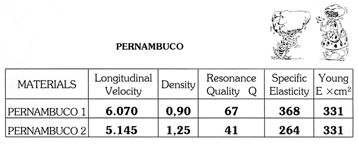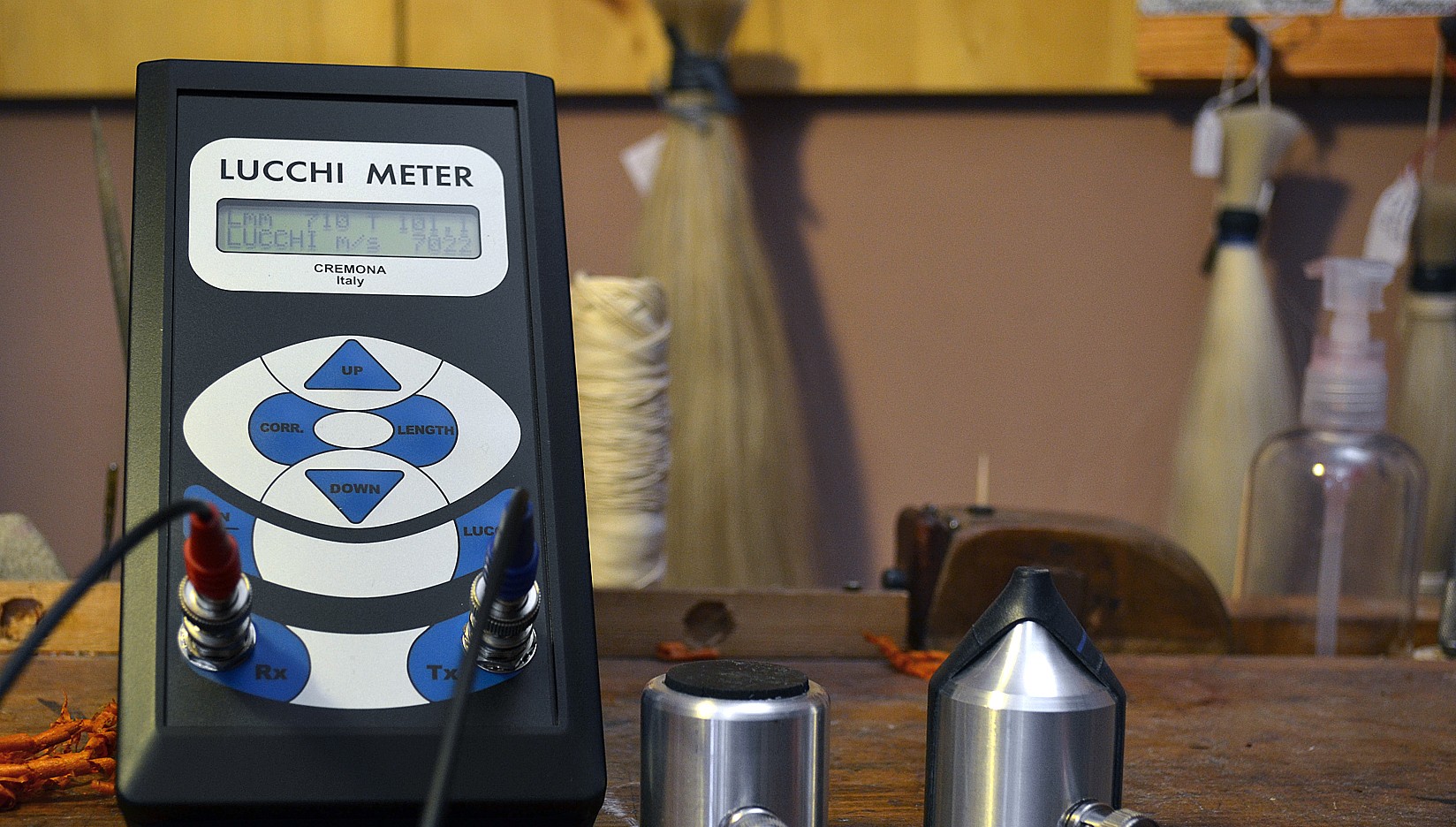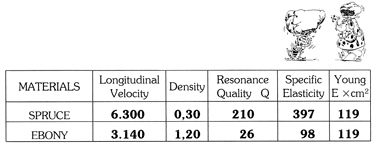The Young modulus, until some years ago, was the only scientific parameter available to luthiers for use to measure sound velocity in materials. Nevertheless, this method does not give any information regarding the acoustic properties. It reveals only the highest weakening degree of the material, that is to say, its strength grade.
The following table will help to demonstrate the failure of this test (figure 3).
|
|
As you can see, both spruce and ebony share exactly the same Young modulus, but no one would be so foolish as to build the harmonic plate of a violin with ebony.
As seen in the analysis, we can note outstanding differences between the two samples.
Ebony is obviously much heavier than spruce. It is not a suitable material as it has a much lower sound velocity in comparison with spruce and, consequently, it is unable to transmit vibrations at a satisfactory level.
Due to the repeated pressure from the player’s fingertips on the strings, ebony should be used exclusively for the fingerboard of bowed instruments. The fingerboard is not intended to vibrate with the instrument, whereas, the tailpiece needs to. Ebony can offer a very high acoustic resistance; therefore, it does not vibrate.
Below is another example showing how the knowledge of sound velocity can help to select the materials to be used.

|
The comparisons between two completely different kinds of woods, such as ebony and spruce, are easily understood. However, they become more difficult to determine when two samples of the same material are measured. As you can see, (figure 4) these two samples of Pernambuco share the same Young modulus. Nevertheless, they are completely different.
The first sample has a very high sound velocity reaching almost the highest possible level for pernambuco. This measurement, in conjunction with good density, renders it well-suited for the making of bows. The second sample has, in fact, a higher density but has a very low sound velocity. This means that the fibers do not transmit sound and, in spite of its weight, this wood will never play or sound well. It is advisable not to use it at all, or use it only for low-grade bows.
From this point on, we will show how it is possible to strictly follow every working phase with our instrument, the Lucchi Minipalm Meter. Every working step, from raw wood until the finished product, may be checked enabling us to understand how the different working techniques may negatively affect our finished instrument and, consequently, how to improve them.

